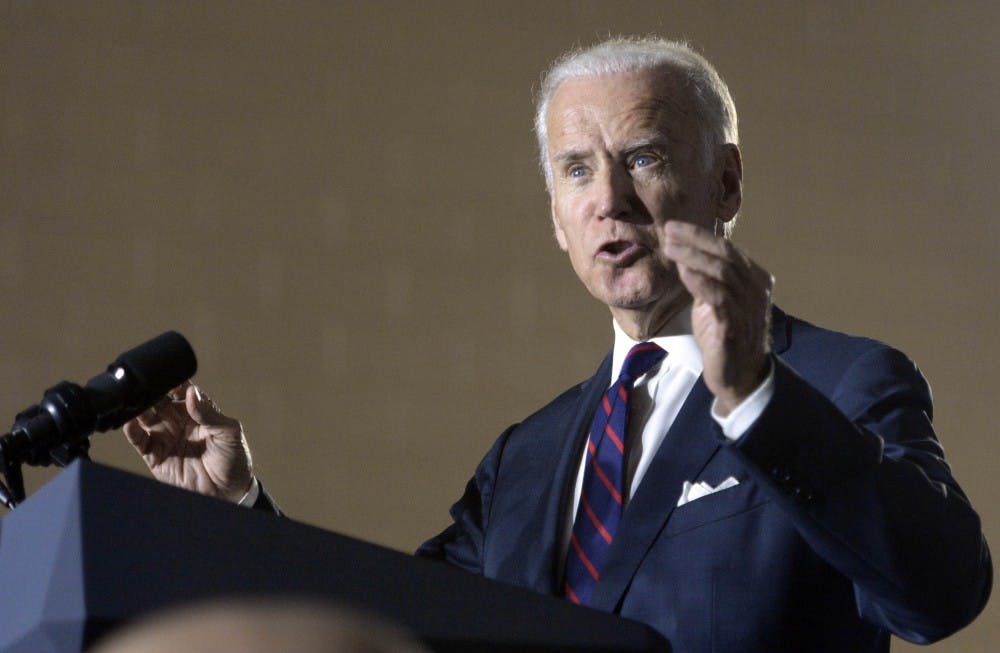An estimated 20 to 25 percent of female college students are victims of a completed or attempted rape over the course of their college careers. Clearly, there is absolutely no question that the sexual assault epidemic plaguing American universities needs to be addressed comprehensively.
Over 300 universities – including ASU – are under Title IX investigations by the Department of Education for issues regarding the ways in which they’ve dealt with sexual assault or harassment complaints.
One attempt to address sexual assault in the U.S. comes in the form of the “It’s On Us” campaign. In its 2014 announcement of the campaign launch, the White House noted, “It's On Us asks everyone – men and women across America – to make a personal commitment to step off the sidelines and be part of the solution to campus sexual assault.”
Join @POTUS in the conversation to end campus sexual assault and take the pledge → https://t.co/n18cRwN3k3 #ItsOnUs https://t.co/3dbBb2cZy9
— It's On Us (@ItsOnUs) October 14, 2016
The campaign – complete with social media profile picture frames to promote awareness – encourages individuals to take a pledge to, among other things, identify and intervene in situations conducive to sexual assault. This approach is known as bystander intervention.
Bystander intervention relies on using social accountability to alter behavior and drive changes in culture or norms. The idea behind bystander intervention is powerful: If the bystander movement is large enough, then intervention is possible in situations that would have otherwise gone unaddressed. If more people actively stand up to sexual violence, the bystander intervention model theoretically promises the creation of a network of support for survivors.
Still, there are serious critiques of bystander intervention. For example, bystander intervention may further entrench violence by presenting the question of who has more power or force: the intervener or the perpetrator?
Furthermore, if we shift our focus exclusively toward bystander intervention, we ignore existing systems and institutions that themselves perpetuate sexual violence. Bystanders cannot change the structural problems that allow victims to be ignored, sexual assault to be normalized and perpetrators to run free. Bystanders cannot, for example, force universities to effectively handle sexual assault complaints.
Additionally, bystander intervention can only go so far to address cases of date or acquaintance rape.
When we talk about sexual assault, we have to be careful not to devolve into victim blaming. Asking what bystanders or the victim could have done to prevent the assault shifts focus away from the perpetrator. Hyper-scrutinizing the victim's behavior or actions is unfair and deters sexual assault reporting.
In sexual assault investigations and prosecutions, “Victim blaming is huge,” said an advocate for victims of sexual assault, who asked to remained unnamed due to the nature of her work.
According to the victim advocate, victim blaming helps feed a culture that normalizes rape. Rape culture, she noted, deeply permeates society and has massive implications on the investigation and prosecution of sex crimes, including perceptions about sexual assault by judges and jurors.
Alcohol is a weapon frequently used by the perpetrators of sexual assault to make victims more vulnerable, but discussions on sexual assault often deteriorate into interrogations about the victim’s own decision to consume alcohol.
The victim advocate frequently has to stand up for victims who consumed alcohol prior to their assault, she said.
“They have the right to get drunk without being raped," she said. "One does not involve the other.”
Public movements such as the It’s On Us campaign are valuable because they mobilize the community to take a stand against sexual assault, and they have the power to attack rape culture at its roots. Yet in the presence of these movements, we cannot neglect to condemn victim blaming and demand action from the institutions plagued by sexual assault.
Ultimately, the responsibility to prevent sexual assault lies not with bystanders nor with victims. The responsibility to prevent sexual assault lies with the perpetrators themselves. We wouldn’t have to establish a responsibility for bystanders to intervene if we simply focused on establishing an irrevocable responsibility to not sexually assault people. That really doesn’t seem like too much to ask.
Reach the columnist at maarmst7@asu.edu or follow @MiaAArmstrong on Twitter.
Editor’s note: The opinions presented in this column are the author’s and do not imply any endorsement from The State Press or its editors.
Want to join the conversation? Send an email to opiniondesk.statepress@gmail.com. Keep letters under 300 words and be sure to include your university affiliation. Anonymity will not be granted.
Like The State Press on Facebook and follow @statepress on Twitter.




